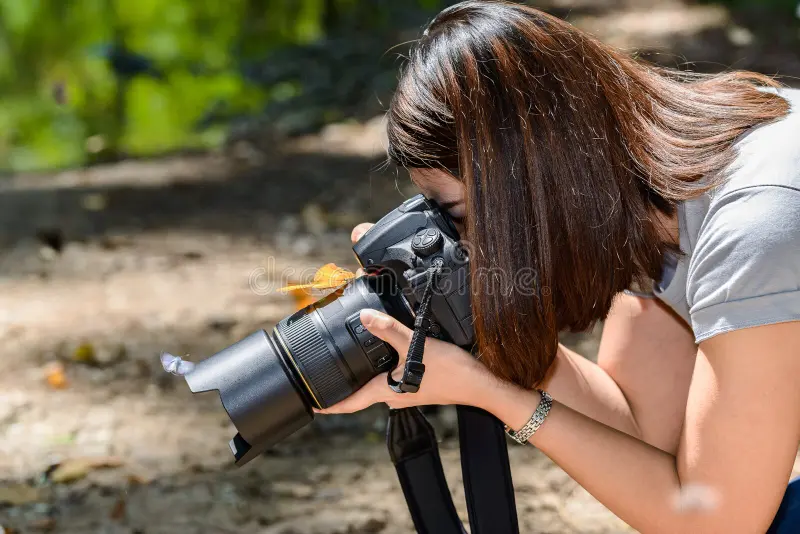Photography is not just about clicking a button—it’s an art form that requires creativity, technical skill, and attention to detail. Whether you’re a beginner or an experienced photographer, understanding certain photography techniques can elevate your images and help you capture stunning photos. From mastering composition to playing with light, there are countless ways to enhance your photography and bring your creative vision to life.
In this article, we’ll cover a variety of techniques, tips, and tricks that will help you capture more striking and professional-looking photos, regardless of your equipment.
1. Master the Rule of Thirds
One of the most fundamental and widely used composition techniques in photography is the rule of thirds. This technique involves dividing your image into nine equal parts by using two vertical lines and two horizontal lines, creating a grid. The rule of thirds suggests that you should position your subject along these lines or at the intersections of these lines, rather than placing it directly in the center.
Why it works:
- The rule of thirds helps create a sense of balance and harmony within your composition.
- Placing your subject off-center can make the photo feel more dynamic and interesting.
- This technique works for landscapes, portraits, still life, and more.
Tip: When composing your shot, try to place your main subject at one of the intersection points, where the vertical and horizontal lines cross. This will draw the viewer’s eye to the subject naturally.
2. Play with Leading Lines
Leading lines are a powerful technique used to direct the viewer’s eye towards the main subject of the photo or guide them through the frame. Lines can be natural (such as rivers, roads, or fences) or man-made (like railways, bridges, or buildings). These lines can be straight, curved, diagonal, or converging toward the horizon.
Why it works:
- Leading lines can create a sense of depth and perspective in your photos.
- They guide the viewer’s attention towards the focal point of your composition, making the image more engaging.
- This technique works well for landscapes, architecture, and street photography.
Tip: When shooting with leading lines, try to position yourself at an angle that makes the lines converge at the vanishing point or lead directly to your subject. Avoid shooting from a straight-on angle as this can make the lines less dynamic.
3. Experiment with Bokeh
Bokeh is the aesthetic quality of the out-of-focus areas in a photograph, especially when there are bright light sources in the background. The result is a pleasing blur that helps emphasize the subject in focus while creating a dreamy, soft background. The shape and size of the bokeh are determined by the aperture of your lens.
Why it works:
- Bokeh can create a beautiful, artistic background that adds emphasis and a sense of depth to the subject.
- It’s great for portraits, macro photography, and any shot where you want to isolate the subject from a distracting background.
- The circular bokeh produced by lenses with rounded aperture blades is particularly attractive.
Tip: To achieve bokeh, use a wide aperture (low f-stop number like f/1.8 or f/2.8) and focus on your subject while keeping the background lights or elements at a distance. The further away the background is, the more pronounced the bokeh effect will be.
4. Use a Shallow Depth of Field
A shallow depth of field (DOF) refers to the portion of the image that is in focus, while the rest is blurred. This technique helps to isolate the subject from the background, drawing attention to the focal point and creating a professional-looking image. Shallow DOF is especially effective in portrait and macro photography.
Why it works:
- Shallow depth of field helps to create separation between the subject and background, making the subject stand out more clearly.
- It’s perfect for portraits, product photography, and any situation where you want to emphasize a specific element in the scene.
- It also creates a sense of intimacy and focus.
Tip: To achieve shallow depth of field, use a wide aperture (e.g., f/1.4, f/2.8) and focus on a single subject. The closer you are to the subject and the further the background, the more pronounced the blur will be.
5. Capture Motion with Long Exposure
Long exposure photography involves using a slower shutter speed to capture the movement of a subject over time. This technique works beautifully for capturing flowing water, traffic lights at night, or even stars in the sky. The key to long exposure is to use a tripod to keep the camera steady while capturing the extended exposure.
Why it works:
- Long exposure creates a sense of motion and fluidity in your photos, adding a dynamic element to otherwise static scenes.
- It can make water look silky smooth, car lights look like streaks, and clouds appear soft and ethereal.
- It’s ideal for landscapes, night photography, or creative shots that require motion.
Tip: When using long exposure, use a low ISO (e.g., ISO 100) and a small aperture (e.g., f/11) to avoid overexposing the image. To prevent camera shake, use a tripod and consider using a neutral density (ND) filter to limit the amount of light entering the lens, allowing for longer exposures in bright conditions.
6. Capture Golden Hour Lighting
Golden hour refers to the period shortly after sunrise or before sunset when the light is soft, warm, and diffused. This time of day offers the best natural lighting for outdoor photography and produces flattering, golden tones.
Why it works:
- The light is soft and diffused, minimizing harsh shadows and reducing the chance of overexposed highlights.
- The warm tones during golden hour make portraits and landscapes appear more inviting and visually appealing.
- The long shadows created during this time of day can add texture and depth to your photos.
Tip: Aim to shoot during the golden hour, which usually occurs within the first hour after sunrise and the last hour before sunset. If you’re shooting portraits, position your subject with the light coming from the side or behind to create a warm, glowing effect.
7. Use Reflections Creatively
Reflections can add interest, depth, and symmetry to your photos. You can use mirrors, water, glass, or any reflective surface to create an artistic and unique perspective. Reflections can either complement or contrast the subject in the frame, adding a layer of visual intrigue.
Why it works:
- Reflections introduce a symmetrical or mirrored effect, which can make the image more engaging.
- They provide a creative way to frame or emphasize the subject.
- Reflections work particularly well in landscape photography (e.g., lakes, puddles) and architectural photography (e.g., glass buildings).
Tip: To capture reflections, find a reflective surface like a calm lake or a shiny floor, and align your subject so that it appears both in the scene and in the reflection. Be mindful of the angle you’re shooting from to avoid distortion or unwanted elements.
8. Incorporate Negative Space
Negative space is the empty area around your subject. By intentionally leaving part of the frame blank, you can highlight the subject more effectively and give the image a minimalist, clean, and impactful look. This technique is particularly effective in landscape and portrait photography.
Why it works:
- Negative space draws attention to the subject by giving it breathing room and emphasizing its presence.
- It can evoke a sense of isolation, solitude, or simplicity.
- It creates a balanced and calming composition.
Tip: To use negative space effectively, place your subject off-center and leave room around it. Experiment with large, open areas like the sky or water to create balance and focus on the subject.
9. Shoot in Manual Mode
While most cameras have automatic settings that will take care of the exposure for you, shooting in manual mode gives you full control over aperture, shutter speed, and ISO. This allows you to experiment and make adjustments for the exact look you want.
Why it works:
- It gives you complete creative control over the exposure and allows you to tailor the settings to your specific needs.
- You can achieve more consistent results, especially in challenging lighting conditions or fast-paced environments.
- It helps you understand the relationship between aperture, shutter speed, and ISO.
Tip: Start by setting one of the settings (aperture, shutter speed, or ISO) and then adjust the others until you achieve the correct exposure. Keep practicing and fine-tuning your settings for better control.
10. Take Advantage of Post-Processing
While capturing the perfect shot is important, post-processing can help enhance your images even further. Editing software like Adobe Lightroom or Photoshop allows you to adjust things like exposure, contrast, white balance, sharpness, and colors, giving you the ability to polish and perfect your photos.
Why it works:
- Post-processing can fix small issues like exposure or white balance.
- It allows you to bring out the details in shadows, highlights, and midtones.
- Editing can enhance the mood or atmosphere of your image.
Tip: Start with basic adjustments, such as exposure correction, cropping, and enhancing colors. As you grow more comfortable, explore advanced editing techniques to add your personal touch to your photos.
Conclusion
Photography is a blend of creativity and technical skills. Mastering these essential photography techniques—such as the rule of thirds, leading lines, bokeh, and long exposure—will help you create visually compelling and professional-looking images. Remember, practice is key! The more you experiment with these tips and tricks, the more confident you’ll become in your ability to capture stunning photos.
Whether you’re shooting portraits, landscapes, or street photography, these techniques can elevate your work and bring your creative vision to life. So, grab your camera, explore new methods, and start taking those breathtaking shots!
Key Takeaways:
- Use the rule of thirds for balanced and dynamic compositions.
- Incorporate leading lines to create depth and guide the viewer’s eye.
- Experiment with bokeh and a shallow depth of field to emphasize subjects.
- Try long exposure for creative motion effects.
- Shoot during golden hour for warm and flattering light.
- Play with reflections to add symmetry and interest to your photos.
- Utilize negative space to emphasize your subject and create minimalist images.
- Practice shooting in manual mode to gain full control over your camera settings.
- Enhance your images with post-processing to fine-tune exposure, contrast, and colors.
With these techniques, you’ll be well on your way to taking stunning photographs that stand out!

